by Robert Verish
![]()
by Robert Verish
Recently Recovered Meteorites
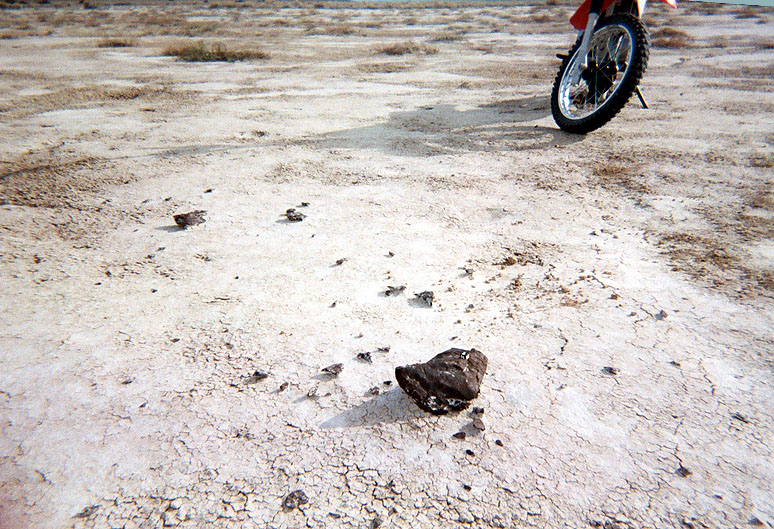
|
|
-- Actually, there were two individual stone meteorites that were reconstructed from the fragments found in this cluster at this locality! --
-- (Photo courtesy of anonymous finder - NOTE: cube scale on largest stone is 1 centimeter! ) -- - |
I must apologize for this months article. Along with being continually plagued by computer hardware problems, this past months meteorite-recovery efforts have kept me very busy. Actually, this is typical for this time of year. Nearly every one of our m-recovery team members were in the field last month. With no more that 2 or 3 team members at any locality at any one time, a lot of area was getting covered. The images below are an attempt to show examples of everyones efforts this past month.
Again, I apologize for the lack of descriptions for these images. These meteorites are all TOO recently found. This article may make a case for there being times when findings are TOO prematurely announced. Which means then, that there must be times when it is not only prudent, but proper to embargo or delay the publishing of meteorite finds. More on this subject in a future article.
-- BELOW are the most recent MOJAVE DESERT FINDS for the MONTH OF NOVEMBER 2003 --
All of the meteorites shown in this article are still pending classification.
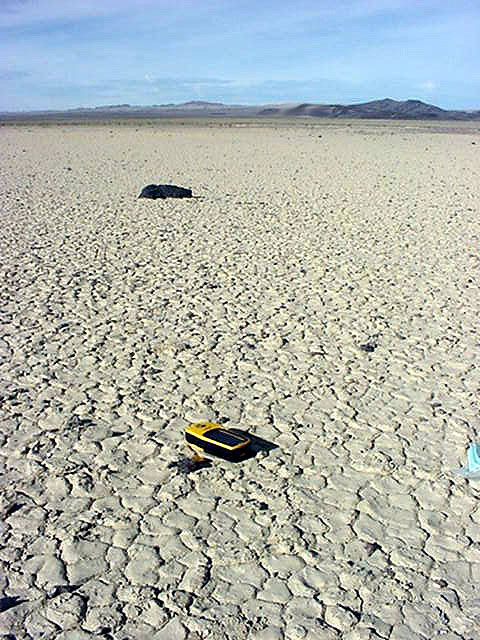
|
| -- documenting another weathered chondrite - (Image taken by finder) -- |
Back at the lab - reconstruction of meteorite is undertaken - see results below.
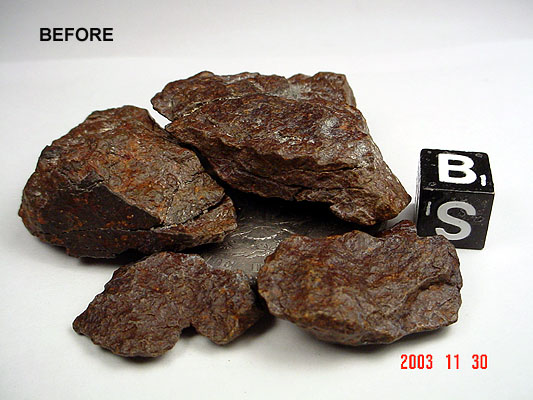
|
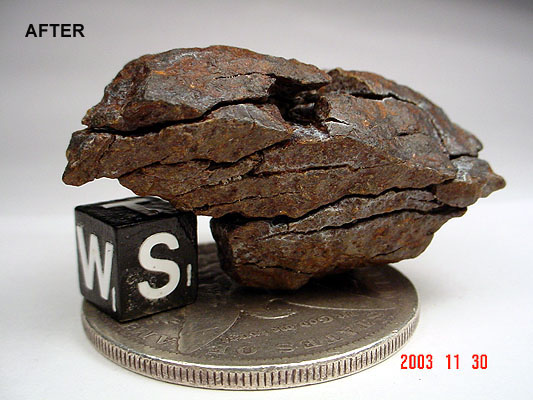
|
| - pending classification - | - pending classification - |
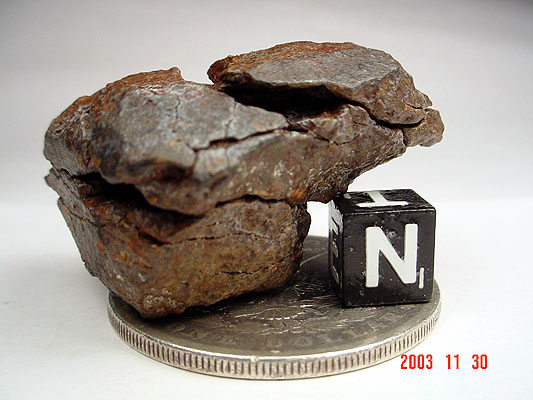
|
| -- Another view of the same stony -- |
-- BELOW is the most recent MOJAVE DESERT FIND for the MONTH OF NOVEMBER 2003 --

|
| -- pending classification - (Image taken by finder) -- |
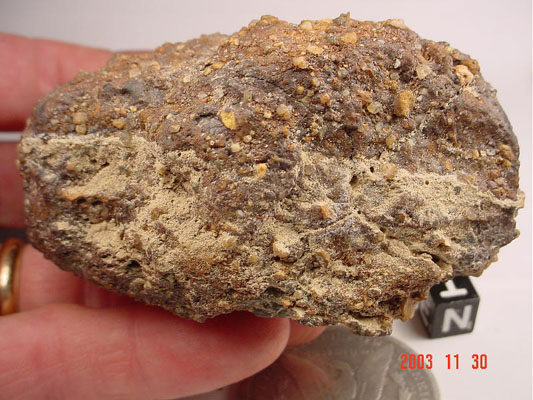
|
| -- pending classification -- |

|
| -- pending classification -- |
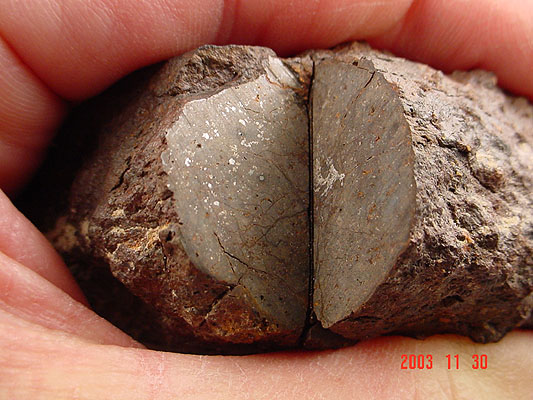
see description below
This image depicts the stone after it has been cut to remove the type
specimen. The interior is deeply and uniformly stained by the oxidation products
of the weathered metal and troilite grains. The broken surfaces have facilitated
the weathering of this stone. Some of the small voids in the groundmass may have
been former metal grains, which have since oxidized. These oxides have since
vacated, forming the voids, migrating throughout the interior of the stone, and
staining the crystalline matrix and chondrules.
All of the meteorites shown in this article are still pending classification.
-- BELOW is the most recent NEVADA FIND for the MONTH OF NOVEMBER 2003 --
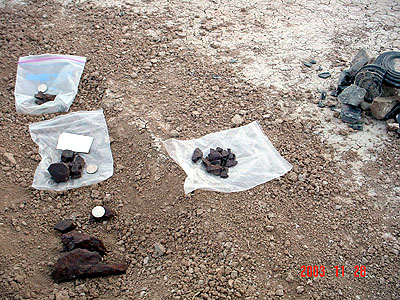
|

|
| - new 1000g cluster! - (Pending reconstruction and classification) - | - close-up view - |
-- BELOW are new ARIZONA FINDS from the MONTH OF October 2003 --
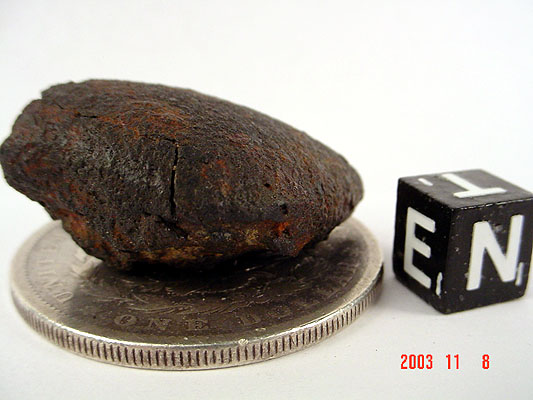
|
| -- pending classification -- |
- Just a guess, but the above stone is probably paired to the little stone below:
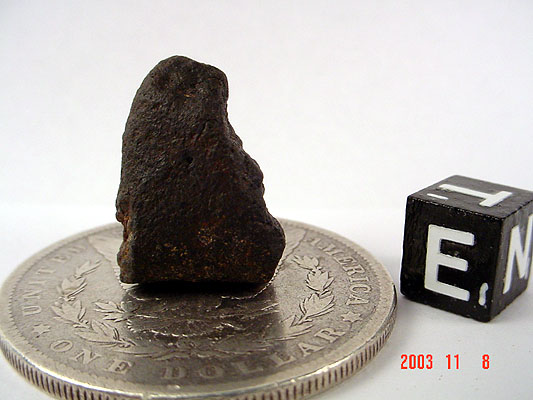
|
| -- pending classification -- |
-- BELOW are NEVADA FINDS from the MONTH OF October 2003 --
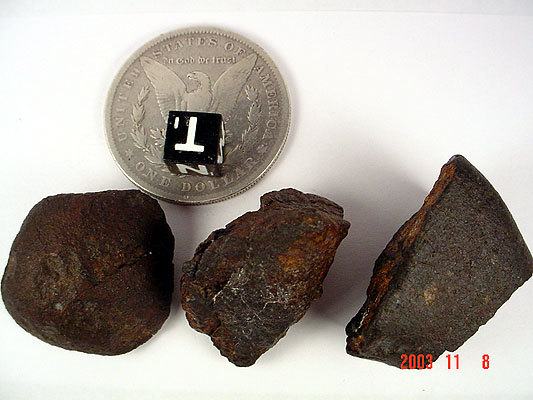
|
| -- pending classification -- |
NONE of the above three stones are paired to each each other. Each is a different chondrite.
Pictured below is the back-side of the stone in the above image on the left side.
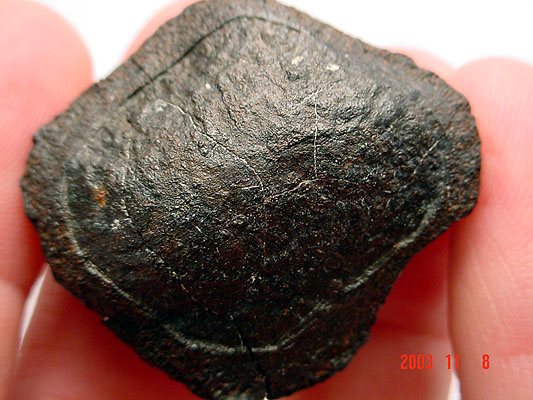
|
| -- pending classification -- |
-- Among all the meteorites pictured in this article, the above 3 stones are the only meteorites that were found by this author. --
All the other meteorites appearing in this article were found by other various Meteorite-Recovery Team members.
The topic of my next few articles will continue a series on California and Nevada Meteorites.
My previous articles can be found *HERE*
For for more information, please contact me by email:
Bolide*chaser
